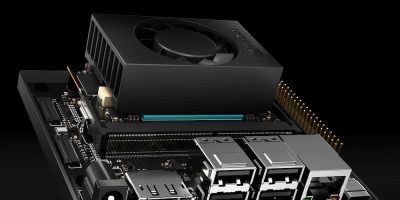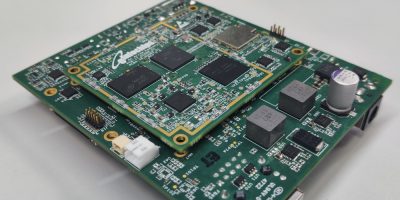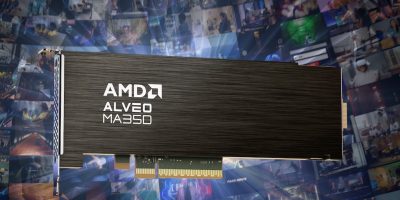Analog Devices’ Marco La Ciacera, regional sales manager, and Brendan O’Dowd, general manager, are interviewed about industrial automation, Industry 4.0, and how to prepare for the factory of the future.
What does it mean for Analog Devices to face the emerging scenario of the Industrial Internet of Things?
The implementation of the Industrial Internet of Things (IIoT) is not a question of making existing systems and processes faster, more efficient, or more accurate: it calls for the adoption of completely new and different technologies. Functions such as condition-based monitoring (CbM) and systems such as autonomous vehicles and cobots were never before found in factories, but are core elements of the IIoT.
By digitising and connecting factory operations, the IIoT has also given rise to new requirements for safety equipment and processes and for data security that were never needed before.
For Analog Devices’ entire existence – it was founded in 1965 – we have been dedicated to the development of analogue-to-digital capabilities: to sense, measure, interpret, connect, power, and secure. These capabilities are an ideal match for the requirements of customers that are implementing the IIoT.
How can ADI contribute to the creation of a new generation of industrial automation infrastructure inspired by the IIoT paradigm?
Analog Devices is not a typical semiconductor company: we push beyond the boundaries of silicon technology, investing heavily in software, systems expertise, and domain knowledge within our key markets. This enables us to address our customers’ challenges at the system level and to help them find the best way to achieve successful outcomes.
This capability is reflected in the unusual structure of Analog Devices. It is not organised along traditional product lines. Instead, everyone involved with customers is in one of two types of division:
u Technology divisions have world-class expertise in technologies such as signal processing, sensing, and power management.
u Market divisions take a system-level view of the customers’ requirement in applications, such as CbM or robotics, and help customers integrate products and systems from Analog Devices and our partners into an effective solution.
This means that Analog Devices can lead companies that are working to implement the IIoT through the development and implementation of an application such as condition-based monitoring of industrial machines or the replacement of driver-operated forklift trucks with autonomous vehicles. We can also help these industrial companies make proper provisions for the safety of factory workers and for the security of networked data – safeguards which go hand-in-hand with the introduction of new IIoT technologies.
What is the vision and strategy for this industry sector?
The idea behind the IIoT is to improve productivity through the digitisation of the entire chain of industrial operations and to develop insights based on digital data. New technological capabilities are also helping manufacturers gain more value from expenditure on factory automation equipment.
A proliferation of miniature, high performance semiconductor sensors alongside pervasive connectedness are creating a deluge of data on machine and process performance. There is now more potential than ever for rich, new applications of data analytics, such as machine health monitoring and preventive maintenance. At the same time, the increasing use of programmable hardware and software-defined electronics functions enable rapid reconfigurations of factory processes and tools.
This means that the factory of tomorrow will be:
u More productive and automated
u More agile and responsive to demand
u Safer
u More secure
Analog Devices will support these developments by providing technologies in domains such as sensing, high speed connectivity, software-defined I/O, data security, and safety systems, and help its customers integrate them into complete system solutions.
Which is the new intelligence that could be brought to the level of industrial Ethernet network?
The proliferation of sensors throughout factories and process plants is generating vast flows of real-time data. Legacy communication protocols between sensor nodes and programmable logic controllers (PLCs), such as 4mA to 20mA control loops, are giving way to ultrafast industrial variants of the Ethernet protocol, enabling increasing integration of operational technology (OT) infrastructure in the factory with information technology (IT) in the enterprise.
In responding to this new demand for high speed data transfer in the factory, OEMs need to future-proof their system implementations, so that they support not only industrial Ethernet protocols in use today, such as PROFINET® and EtherCAT, but also the emerging time-sensitive networking (TSN) variant of Ethernet.
We expect the future backbone of connectivity in factories to be TSN. While a mix of Industrial Ethernet protocols are in use today, there are huge industry benefits in standardising on the TSN Ethernet protocol. Manufacturers should be specifying TSN-ready solutions with a roadmap of other enhancements if they are to ensure their network investments are part of a longer-term plan.
To support the transition to Industrial Ethernet – and ultimately to TSN – Analog Devices provides an Ethernet platform which enables systems to swap from one Ethernet protocol to another without the need for hardware redesign, giving industrial equipment manufacturers flexibility to meet the requirements of different customers with a single-platform product.
On top of this, Analog Devices products already include TSN features and are regularly upgraded to support new provisions in the draft TSN standard as they are introduced.
Industrial companies should also think carefully about data security alongside any introduction of Ethernet networking in the factory. The vulnerability of an Industrial Ethernet network is very different from that of legacy 4mA to 20mA systems: an attack on a 4mA to 20mA node only exposes the device immediately connected to that node. By contrast, an attack on an Ethernet node potentially exposes the entire factory network to the threat of malware or intrusion. Robust data security technologies can ensure that factories gain the benefits of high speed connectivity without any increased risk to business continuity or integrity.
Optimising security requires a system-level approach instead of thinking about the requirements of any particular device or end point. Security can be delivered in a variety of ways throughout the system – within edge devices, controllers, gateways, or further up the stack. Before focusing on the how at any given point in the network, systems specifiers should focus on questions of where and how much.
This should both consider the threat level at each point, as well as the cost of countering the threat, with a view to adding effective security with the fewest trade-offs in power, performance, and latency. A layered approach will result in a superior overall security posture.
Manufacturers would be wise to invest time and resources, either organically or by choosing a partner such as Analog Devices, in a system-level approach that expands security expertise beyond the machine level.
Condition-based monitoring: what technology can be used to ensure nonstop operation?
The goal of CbM should in fact not just be nonstop operation – it should be to achieve nonstop operation continuously at maximum efficiency.
To achieve this, MEMS sensor technology is of crucial importance: it is enabling the development of new sensor types that are small, robust, and able to precisely measure vibration and motion. For instance, low noise, wide bandwidth accelerometers offer the high precision and accuracy required to identify subtle changes in the vibration signature of a machine. Coupled with sensor analytics software, these devices enable equipment operators to pinpoint the source of a potential failure long before it occurs, and to apply preventive maintenance measures in good time.
Machine health monitoring is not confined to conventional factory settings. Mobile or remote industrial equipment may use a wireless connection to report diagnostic information and operating status to a central controller. Running on battery power or intermittent power sources such as solar energy requires a very low power sensing solution – technology which Analog Devices can provide.
About the Authors
Marco La Ciacera is a regional sales manager for Italy, Israel, and Turkey. Marco joined ADI from Rohm Semiconductor, where he spent 2 years as a country manager, responsible for business (mainly automotive and industrial) in Italy, Israel, and Turkey. Before that, Marco worked for 4 years at Vicor Corporation as a regional sales manager for South Europe. He also has a technical background coming from 10 years as a project leader at Maxim for industrial applications and as an IC designer for power management solutions at STMicroelectronics. Marco has an electronics engineering degree from the Politecnico di Milano and an Executive Master of Business Administration from SDA Bocconi University in Milan. He can be reached at marco.laciacera@analog.com.
Brendan O’Dowd has over 30 years experience in the industry working for companies like Tellabs, Apple, and Analog Devices. He is currently the general manager of Analog Devices’ industrial automation business. He can be reached at brendan.odowd@analog.com.







